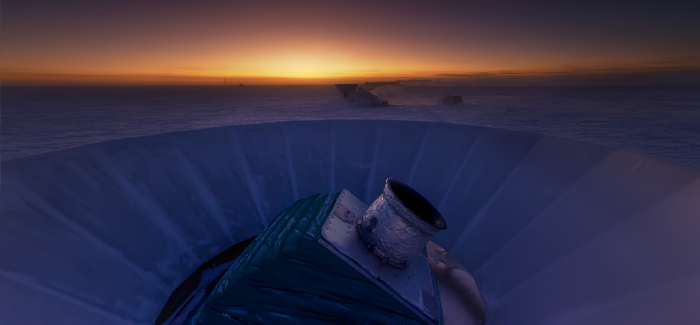
(National Science Foundation/Steffen Richter, BICEP)
Inflationary pressures
The blockbuster cosmic inflation discovery faces a “sledgehammer” of scrutiny.
During the editing of Benjamin Recchie’s article about the apparent discovery of gravitational waves confirming the cosmic inflation theory of the instant after the big bang, one of the questions concerned timing.
The BICEP2 experiment ran from 2010 to 2012, the story in the May-June/14 issue of the Magazine reports, but the results were not presented until March of this year. An editor flagged that lag to make sure there wasn’t a typo in the timeline. Recchie, AB’03, a science writer with a physics degree, confirmed the years between data collection, analysis, and announcement. “Science,” he added, “is hard.”
So hard, in fact, that the BICEP2 team’s painstaking conclusions have been subjected to further scrutiny. Harvard’s John Kovac, PhD’04, led the experiment and stands by the results even as other physicists call them into question. The skeptics argue, in effect, that the researchers confused dust from the Milky Way galaxy alone with the grail they sought from the origin of the universe.
Caltech physicist Sean Carroll weighed in after the rumors started last week and this Washington Post report gathered much of the criticism and response that followed.
If there’s any area of agreement, it’s that the magnitude of the results merits the most exacting independent analysis. As Columbia University’s Brian Greene put it in the Post, “hit it with a sledgehammer and see if it survives.”
